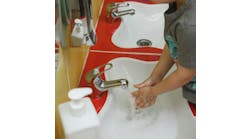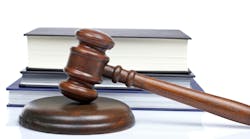Schools and universities that have not upgraded their washrooms in many years should be able to reap savings by installing systems that use water and energy more efficiently.
No matter what the size of the education institution, the subjects being taught or the age of the students being served, washrooms are a universal presence in schools. Making sure they are well-maintained is a top priority; the green movement in education design and construction has empowered many facility managers to upgrade their washrooms so they are not only clean, but also environmentally friendly.
Energy guidelines put together by the North Carolina Department of Public Instruction recommend several ways to reduce the amount of water consumed in school washrooms:
-
Rainwater collection
Water is collected from roofs or ground-level surfaces and stored in a tank. The water is filtered and can be used for showers, sinks, laundries and toilet flushing.
-
Grey-water systems
Untreated, used water that has not been contaminated by toilet waste (e.g., water from showers, bathroom wash basins and washing machines) can be filtered, sterilized, deodorized and recycled for flushing toilets and urinals.
-
Waterless urinals
Many schools and universities have opted to install urinals that require no water.
Advocates of health and hygiene routinely emphasize that washroom users should clean their hands before exiting. That requires soap and water, but schools can install systems that dispense water more efficiently. That means faucets that encourage students and staff to use less water. Low-flow faucets, showerheads, toilets and urinals are available that use less water than older models. Faucets or showerheads that turn off automatically or use sensors or timers to control operation prevent water from running unnecessarily.
Timers and occupancy sensors also can be used in school washrooms to provide lighting only during school hours or when someone enters the space.
After a school or university has explored all the ways to conserve water in its washrooms, one more environmental question remains: How should users dry their hands after washing them?
So which method is more energy-efficient — paper towels or electric hand dryers? It depends. The variables include how many towels a person uses, the type of paper towels used, the wattage of the electric dryer, and how long the electric dryer operates.
Paper towels don't consume electricity, but producing them consumes many trees, and manufacturing and transporting them consumes energy. Manufacturing and disposing of the garbage bags that collect used paper towels also consumes energy. Electric hand dryers consume electricity when they are being used, but once they are manufactured, they do not consume any materials or contribute to the waste stream.
The Climate Conservancy, a non-profit group that seeks to reduce greenhouse gas emissions, has crunched some of the numbers and concluded that in general, using the typical electric dryer found in a public washroom is better for the environment.
“If you walk into an average bathroom and use an average hand dryer in an average way, you'll be causing somewhere between 9 to 40 grams of carbon dioxide emissions,” the conservancy says. “If you use two towels, data suggests you will be responsible for roughly 56 grams of carbon dioxide emissions. So, if you're not willing to use your pant leg, your best bet is an efficient dryer and, if one is not available, go for one towel.”
Although the conservancy's calculations used what it considered an “average” electric dryer, it noted that newer dryers are being manufactured that supposedly operate more efficiently and dry more effectively. “These redesigned dryers may be a great way to conserve energy,” the conservancy says.

